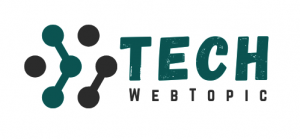Cataloging is a mindful exercise. Your digital marketplace needs it to be done more wisely because it’s more than just a collection of items. It’s a vital asset that represents your shopfront; sometimes, it works as a salesperson. So, it showcases the first impression of your online shop. Unfortunately, many businesses fail to make that first long-lasting impression because of their offbeat, cluttered, and inconsistent data, which leaves customers confused, who run away.
It’s discovered that 88% of online shoppers are less inclined to re-explore a website that offered a bad user experience. So, the necessity is to clean up product catalogs if you really want to make a profit. Here is how you can optimize it efficiently.
The Cost of Catalog Chaos
First and foremost, a substantial point is the pricing. With a messy online catalog that has inconsistent descriptions, missing images, or incorrect pricing, customers won’t like to explore. It erodes trust and conversion rates. Simply put, they don’t often find what they look for conveniently.
As per a Baymard Institute report, 49% of online shopping carts are abandoned, and one of the foremost reasons is poor product details. Just think of the scenario where the intended customer is there to buy, but unclear descriptions, missing specifications, or visuals push them to leave money on the table.
This point not only highlights its low sales but also disorganized catalogs. In other words, a sales team does not find products’ USPs. Moreover, mismatched inventory creates trouble in shipping. And the marketing team fails to get benefits out of campaigns.

Catalog Data Entry: The Foundation of Clean Catalogs
Hygiene is the core of a catalog. Its inaccuracy and unstructured format can cause distraction, which can be prevented through catalog data entry. Outsourcing or investing in professional catalog data input services facilitates consistently formatted, keyword-optimized, and error-free cataloguing. So, a catalog entry is not just about ensuring zero typos but also some other aspects. These can be the following:
- Data standardization: This is particularly necessary to standardize formats, units, and descriptions across various categories.
- Image tagging & optimization: Tagging refers to associating the right images with products by optimizing ALT text and other SEO elements.
- Price updates: The prices of products must be regularly updated as per inflation and deflation in the market and competition.
- Attribute tagging: This is particularly related to filters like color, size, and compatibility, which helps in making the product more vulnerable.
Professional services introduce you to a structured and navigable catalog that not only makes customers’ journeys seamless but also enhances its SEO exposure. Simply put, digital marketing gets a boost via these services.
Automation Meets Human Precision
Combining automation tools with human expertise for catalog management is extremely common to see around. Automated product feed managers, AI & scripting-based web scraping tools, and catalog management software like Akeneo are some of its live examples that streamline data and its handling automatically.
This is also a truth that automation alone cannot input data with 100% accuracy and precision, especially when the data is intricate and products are customized. This is why professional data input experts are in demand. They not only review, input, and clean but also enrich its data manually. Gartner also researched and found that poor data quality costs an average of $12.9 million every single year to organizations. So, human intervention is as substantial as AI and machine learning to ensure precision, attention to detail, and validation of the catalog data.
Efficient Strategies to Clean & Manage Catalogs
Here are some extremely effective strategies that businesses can use to keep their catalogs clean and organized.
1. Centralized Product Information Management (PIM)
A PIM system is the base of all product data, which is why it must be consistent across all sales platforms used, such as websites, Amazon, or social media shops. With it, you can dynamically see the changes reflected everywhere once you update in one place. This practice helps in controlling errors and streamlining the catalog management process.
2. Regular Catalog Audits
Smart businesses schedule regular audits to check for:
- Smart online stores regulate audits of their product data. In simple terms, they ensure no:
- Duplicate products
- Missing and offbeat information
- Incorrect and irrelevant SKUs
- Broken image links
If audits are not regularly possible, they can be conducted quarterly and during key sales seasons so product descriptions can be updated and optimized.
3. SEO-Driven Catalog Data
Advanced digital stores understand that catalogs are not just for customers but for search engines also. So, their optimization is necessary. That’s why catalog content experts focus on integrating keywords, SEO-friendly titles, descriptions, and meta tags for better visibility. It helps in driving more organic traffic, especially through long-tail product searches.

4. Data Validation Workflows
Implementing validation workflows where product data goes through multiple checks—both automated and manual—ensures fewer errors and higher quality.
Auditing the validity of workflows and data accuracy is a must. It means checking data through multiple processes, including automated and manual processes. It ensures fewer errors and higher quality. So, the process involves the following:
- Automated typos or spell checkers and standardizing formats
- Manual reviews & validation by product experts
- Cross-referencing with supplier data updates
5. Outsourcing Catalog Data Entry
Many businesses now look for third-party professionals to update catalog data entries. They are specialized partners that not only reduce overhead costs but also accelerate the speed of catalog updates. So, it requires expert handling, which an outsourcer provides.
This alternative allows businesses to access skilled professionals that can clean, organize, and enrich product details while following the latest standards of e-commerce.
The Payoff of a Clean Catalog
The clean and optimized catalog speaks for itself. It shows incredible potential and ability to generate more revenues.
- Better customer experience: With easy-to-navigate, accurate descriptions and smooth checkout procedures, a catalog becomes more exponential in retaining and converting customers.
- Increased sales: With clear and refined data in a catalog, the duration to invest reduces. Simply put, customers quickly decide to invest, leaving barely any abandoned carts.
- Improved internal efficiency: Internal teams spend less time filtering and correcting errors and more on sales and marketing.
- Boosted SEO rankings: The fully optimized and updated catalog data and SEO activities attract more organic traffic, which enhances visibility.
Conclusion
The clutter to clean catalog can help attract a strategic win, which boosts sales and web exposure. That’s why online sellers invest in catalog data entry services and tools so your digital shopfronts can become more visible and attractive because of accurate & clean data. The growing e-commerce businesses are in a win-win situation because of clean and valuable data.


